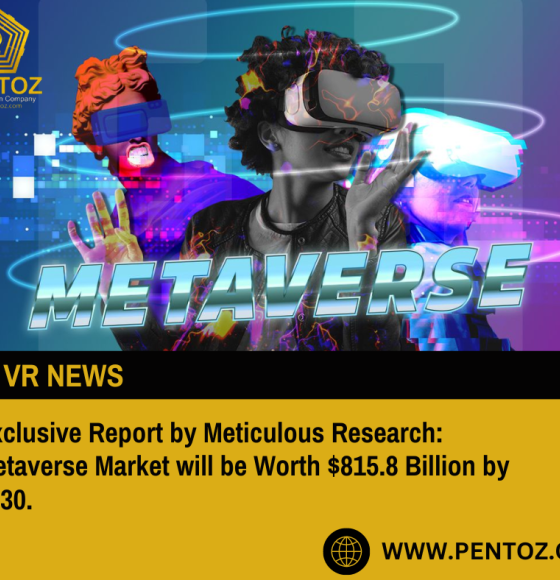Global Forecast to 2030 for the Metaverse Market by Offering (Hardware, Platforms), Medium (HoloLense, Headset, Others), Application (Virtual/Enhanced Gaming, Others), End-use Industry (Gaming, Marketing & Advertising, Others), and Geography.
Any 3D virtual environment supported by technologies like virtual reality (VR), augmented reality (AR), artificial intelligence (AI), the Internet of Things (IoT), and blockchain that enable interactivity between people (and, in some cases, non-human avatars) is referred to as a metaverse. Every major industry, including education, gaming, tourism, and healthcare, uses metaverse applications.
The entertainment and gaming industries’ growing demand for metaverse, rising government efforts and investments in metaverse, and the expanding use of metaverse to improve customer experience are some of the key factors propelling the growth of this market. More chances for market expansion are anticipated as a result of the expanding use of virtual experiences in the corporate and hospitality sectors as well as the growing demand for metaverse in training and education. The market’s expansion may be constrained, though, by costly installation and maintenance costs as well as health risks from excessive use.
The metaverse market is divided into offering (hardware, platforms), medium (hololens, desktops, smartphones, and headsets), application (virtual learning, VR entertainment, virtual work settings, virtual/enhanced gaming, virtual socialization, and other applications), and end-use industry (gaming, IT & telecommunications, education, finance, marketing & advertising, healthcare, travel & hospitality, construction, transportation, manufacturing, and retirement). Additionally, the study assesses market rivals and conducts regional and national market evaluations.
The hardware and platform markets in the metaverse are divided based on offering. The hardware sector is anticipated to hold a bigger part of the global metaverse market in 2023. But during the forecast period, the platforms category is anticipated to have the greatest CAGR. The increasing use of metaverse across a range of end-use industries, including BFSI, retail, and media & entertainment, as well as rising investment in immersive technology, are the major factors driving the segment’s growth.
The metaverse market is divided into hololense, desktops, cellphones, and headsets based on the medium. The desktops market is anticipated to hold the greatest proportion of the global metaverse market in 2023. But during the forecast period, the smartphone segment is anticipated to have the highest CAGR. The use of smart devices has expanded as a result of technological improvement and the emergence of web 3. The majority of Metaverse apps are made accessible for Android phones and tablets. With an Android device, users can access some of the metaverses and download Android apps. For instance, the Chinese company Baidu, Inc. created a metaverse app in November 2021 that enables users to explore virtual worlds using their smartphones, laptops, or VR headsets.
Because of the convenience and accessibility that these devices provide, as well as the rising popularity of smartphones, firms’ ability to generate revenue from mobile gaming has grown significantly.
The virtual learning, VR entertainment, virtual work environments, virtual/enhanced gaming, virtual socialization, digital health resources, and other applications categories make up the metaverse market. The increasing use of metaverse to improve student performance, speed up learning, provide immersive learning experiences, and make learning more dynamic and engaging is the key factor driving the segment’s rise.
The gambling, IT & telecom, education, finance, marketing & advertising, healthcare, travel & hospitality, travel & hospitality, construction, transportation, manufacturing, retail & e-commerce, and other end-use industries are the several end-use industries that the metaverse market is divided into. The worldwide metaverse market is anticipated to be dominated by the gaming industry in 2023. But during the forecast period, the marketing and advertising segment is anticipated to have the highest CAGR. The growing demand for immersive and captivating experiences that may help raise brand visibility, improve user engagement, produce new revenue streams, and acquire important insights into user behavior and preferences is what is fueling the segment’s growth.
The metaverse market is divided into five regions based on geography: North America, Asia-Pacific, Europe, Latin America, and the Middle East & Africa. The highest CAGR is anticipated to be recorded throughout the forecast period in Asia-Pacific. The country’s metaverse market is anticipated to grow as a result of factors like increasing demand for the technology in the media & entertainment and gaming sectors, evolving opportunities in related markets like virtual reality (VR), augmented reality (AR), and mixed reality (MR), rising investment in the technology, and digitalization in the art, fashion, and retail sectors.
Several recent advances include:
South Korea declared in March 2023 that it will invest USD 21 million (27.7 billion KRW) on regional services utilizing the metaverse.
The XR Startup Program was launched in September 2022 as a result of a partnership between Meta Platforms, Inc. (U.S.) and the IT Ministry of India. Its goal is to foster innovation in rapidly emerging technologies like virtual and augmented reality. The goal of this effort was to promote technical advancement in smaller cities and villages.
Temasek, the state-owned corporation in Singapore, gave USD 100 million to Animoca Brands Corporation Ltd (China) in August 2022, further strengthening the company’s position as a metaverse stalwart.
i-City Malaysia stated in February 2022 that it would invest USD 2.17 million (RM 10 million) to upgrade a theme park with 3D metaverse.

















